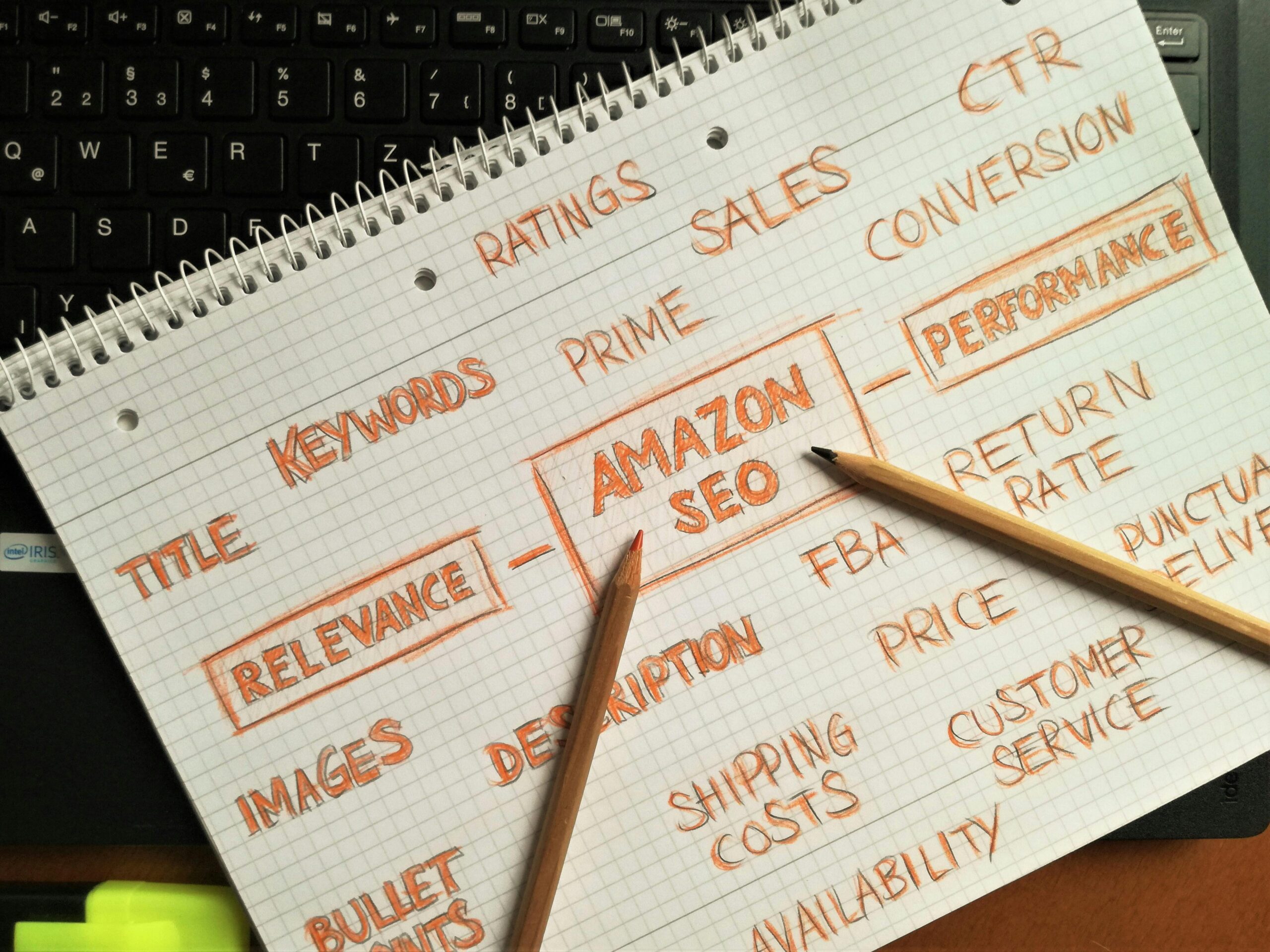Your website traffic is soaring, but sales remain stagnant. The culprit? A weak conversion rate that’s hemorrhaging potential revenue and leaving profits on the table.
Conversion rate optimization (CRO) isn’t just another marketing buzzword—it’s the systematic process of turning more website visitors into paying customers, subscribers, or leads. While most businesses obsess over driving more traffic, the smartest entrepreneurs understand that optimizing conversions from existing traffic delivers faster, more cost-effective results. Every percentage point improvement in your conversion rate directly impacts your bottom line, often delivering ROI that far exceeds traditional marketing investments.
The mathematics are compelling: if your website currently converts at 2% with 10,000 monthly visitors generating 200 conversions, improving to just 3% yields 300 conversions—a 50% increase in results without spending a penny more on traffic acquisition. This fundamental principle makes CRO one of the most powerful levers for business growth available to modern marketers.
🎯 Understanding the Conversion Rate Optimization Foundation
Before diving into tactics, you need to grasp what conversion rate optimization truly encompasses. At its core, CRO is the science and art of understanding user behavior, identifying friction points in your customer journey, and systematically removing obstacles that prevent visitors from taking desired actions.
Your conversion rate is calculated by dividing the number of conversions by total visitors, then multiplying by 100. If 1,000 people visit your landing page and 25 make a purchase, your conversion rate is 2.5%. However, different pages serve different purposes—homepage visits, product page views, cart additions, and checkout completions each have distinct conversion metrics worth tracking.
The conversion funnel typically includes awareness, interest, consideration, intent, and purchase stages. Leaks at any point reduce your overall conversion rate. A visitor might land on your homepage (awareness), browse product categories (interest), view specific items (consideration), add products to cart (intent), but abandon before checkout (lost conversion). Identifying where prospects exit this funnel reveals your optimization opportunities.
Data-Driven Decision Making: Your CRO Compass 📊
Effective conversion rate optimization begins with comprehensive data collection and analysis. Without understanding current performance and user behavior patterns, you’re essentially guessing—a recipe for wasted resources and missed opportunities.
Google Analytics remains the foundational analytics platform for most businesses, offering free insights into traffic sources, user demographics, behavior flow, and conversion tracking. Configure goals that align with your business objectives—whether newsletter signups, product purchases, quote requests, or content downloads. These goals transform raw traffic data into actionable conversion intelligence.
Heatmapping tools like Hotjar, Crazy Egg, or Microsoft Clarity reveal where visitors click, how far they scroll, and which page elements attract attention. These visual representations often expose surprising insights—that prominent call-to-action button you designed might be completely ignored, while an unoptimized element receives unexpected engagement.
Session recording functionality allows you to watch actual user sessions, observing real behavior patterns, confusion points, and navigation paths. This qualitative data complements quantitative analytics, providing context that numbers alone cannot convey. You might discover users repeatedly clicking non-clickable elements, struggling with navigation, or abandoning forms at specific fields.
Essential Metrics Every Optimizer Must Track
Beyond basic conversion rate, several key performance indicators provide deeper optimization insights:
- Bounce Rate: The percentage of single-page sessions where visitors leave without interaction, indicating potential relevance or engagement issues
- Average Session Duration: How long visitors spend on your site, suggesting content quality and engagement levels
- Pages Per Session: The number of pages viewed during visits, revealing navigation effectiveness and content interest
- Exit Rate: The percentage of visitors leaving from specific pages, highlighting potential problem areas
- Cart Abandonment Rate: For e-commerce sites, the percentage of shopping carts created but not completed
- Form Completion Rate: The percentage of users who start forms and successfully submit them
- Click-Through Rate: The ratio of clicks to impressions on calls-to-action, ads, or email campaigns
Psychological Principles That Drive Conversions 🧠
Human psychology profoundly influences purchasing decisions. Understanding and applying behavioral science principles dramatically improves conversion rates by aligning your website experience with how people naturally think and make decisions.
Social proof leverages our tendency to follow others’ actions, especially under uncertainty. Displaying customer testimonials, user reviews, case studies, client logos, and real-time purchase notifications builds trust and credibility. When prospects see that others have successfully used your product or service, their perceived risk decreases and confidence increases.
Scarcity and urgency trigger our fear of missing out (FOMO), accelerating decision-making. Limited-time offers, countdown timers, low-stock warnings, and exclusive availability create psychological pressure to act now rather than later. However, authenticity matters—artificial scarcity that visitors recognize as manipulation damages trust and brand reputation.
The principle of reciprocity suggests that people feel obligated to return favors. Offering valuable free content, tools, trials, or consultations creates goodwill that increases conversion likelihood. This strategy works particularly well for higher-priced products or services requiring longer consideration periods.
Decision paralysis occurs when too many options overwhelm visitors, leading to analysis paralysis and abandonment. Simplifying choices, providing clear recommendations, and using progressive disclosure (revealing information gradually) helps visitors make confident decisions without feeling overwhelmed.
Optimizing Your Landing Pages for Maximum Impact 🚀
Landing pages serve as conversion battlegrounds where visitor interest either transforms into action or evaporates. Every element must work harmoniously toward a singular conversion goal.
Your headline is the first and sometimes only element visitors read. It must immediately communicate value, relevance, and benefit. Weak headlines like “Welcome to Our Website” waste precious attention, while powerful headlines like “Reduce Customer Support Costs by 40% in 60 Days” clearly articulate specific value propositions that resonate with target audiences.
Above-the-fold content—everything visible without scrolling—determines whether visitors engage further or bounce. This prime real estate should include your strongest value proposition, a compelling visual, and a clear call-to-action. Visitors should immediately understand what you offer, why it matters, and what action you want them to take.
Call-to-action buttons deserve meticulous optimization. Button color, size, placement, and copy all significantly impact conversion rates. Action-oriented, specific text like “Start My Free 14-Day Trial” outperforms generic phrases like “Submit” or “Click Here.” Button placement should follow natural eye-flow patterns, appearing where visitors naturally look after consuming persuasive content.
Form Optimization: Reducing Friction, Increasing Completions
Forms represent critical conversion points but also major friction sources. Every additional form field reduces completion rates, so ruthlessly eliminate non-essential fields. Ask only for information absolutely necessary at this stage—you can gather additional details later in the customer relationship.
Multi-step forms often outperform single-page forms by reducing perceived effort and increasing commitment through progressive engagement. Breaking a 12-field form into three 4-field steps feels less overwhelming and allows you to display progress indicators that encourage completion.
Inline validation providing real-time feedback as users complete fields prevents frustration from discovering errors only after submission. Smart defaults, auto-fill functionality, and clear formatting examples (for phone numbers, dates, etc.) further reduce friction and completion time.
The Power of A/B Testing: From Guesswork to Certainty 🔬
A/B testing (split testing) transforms conversion optimization from opinion-based guessing into evidence-based decision making. By comparing two versions of a page element and measuring which performs better, you accumulate proven improvements that compound over time.
The A/B testing process involves identifying optimization opportunities, forming hypotheses, creating variations, splitting traffic between versions, collecting sufficient data for statistical significance, analyzing results, and implementing winners. This scientific approach eliminates subjective debates and focuses on measurable performance.
Start testing high-impact elements that significantly influence conversions: headlines, primary calls-to-action, hero images, value propositions, and pricing presentations. Once you’ve optimized these macro elements, move to micro optimizations like button colors, testimonial placement, or form field order.
Testing requires patience and adequate sample sizes. Declaring winners prematurely based on insufficient data leads to false conclusions. Most testing platforms calculate statistical significance automatically, but generally you need hundreds or thousands of conversions per variation for reliable results. High-traffic sites achieve significance faster than low-traffic sites.
Avoid testing too many variables simultaneously, which makes isolating effective changes impossible. Multivariate testing—examining multiple element combinations—requires substantially more traffic and sophistication. Most businesses achieve better results through sequential A/B tests that build on previous learnings.
Mobile Optimization: Capturing the Growing Majority 📱
Mobile devices now generate over half of global web traffic, making mobile optimization essential rather than optional. Conversion rates on mobile traditionally lag desktop, but this gap narrows when businesses prioritize mobile user experience.
Responsive design ensures your website adapts gracefully to any screen size, but true mobile optimization goes further. Mobile users have different contexts, needs, and interaction patterns than desktop users. They’re often on-the-go, distracted, and using touch navigation rather than mouse precision.
Page speed becomes even more critical on mobile devices, which often connect via slower cellular networks. Compress images aggressively, minimize code, leverage browser caching, and consider accelerated mobile pages (AMP) for content-focused pages. Every second of load time directly correlates with conversion rate—Amazon found that every 100ms delay cost them 1% in sales.
Touch-friendly design requires larger clickable elements (minimum 44×44 pixels), adequate spacing between interactive elements, and consideration for thumb-reach zones. Forms should use appropriate input types that trigger relevant mobile keyboards (numeric for phone numbers, email keyboard for addresses, etc.).
Building Trust: The Conversion Rate Multiplier 🛡️
Trust fundamentally underpins all online conversions. Without trust, even perfectly optimized pages fail to convert because visitors fear scams, poor quality, or negative experiences. Every element of your website either builds or erodes trust.
Professional design quality signals legitimacy and competence. Outdated designs, broken elements, poor imagery, or inconsistent branding create doubt about your business credibility. You don’t need expensive custom design, but your site must appear polished, modern, and professional.
Security indicators have become essential, especially for e-commerce and sites collecting personal information. SSL certificates (displaying “https” and padlock icons), trust badges from recognized security services, clear privacy policies, and transparent data handling practices reassure visitors their information remains protected.
Transparent pricing, clear return policies, accessible customer service contact information, and authentic reviews (including some negative feedback) demonstrate honesty and confidence in your offerings. Companies hiding prices, contact details, or terms create suspicion that damages conversion rates.
Personalization: Creating Relevant Experiences That Convert 🎨
Generic, one-size-fits-all experiences increasingly underperform against personalized alternatives that reflect individual visitor characteristics, behaviors, and preferences. Personalization technology enables delivering relevant content, offers, and experiences at scale.
Segmentation divides your audience into groups sharing common characteristics—first-time versus returning visitors, traffic sources, geographic locations, device types, or behavior patterns. Each segment can receive tailored messaging that resonates with their specific situation and needs.
Dynamic content adaptation changes page elements based on visitor attributes. Returning visitors might see different messaging than first-timers, highlighting account access rather than initial value propositions. Geographic personalization displays relevant currencies, languages, shipping information, or local testimonials.
Behavioral triggers respond to visitor actions—exit-intent popups display when users show abandonment signals, cart abandonment emails remind shoppers of incomplete purchases, and browsing history informs product recommendations. These timely, relevant interventions significantly boost conversions compared to static experiences.
Conversion Optimization Beyond Your Website 💼
While websites receive primary optimization focus, conversion opportunities extend across your entire digital ecosystem. Email marketing, social media, advertising, and post-purchase experiences all influence your overall conversion performance and customer lifetime value.
Email conversion optimization applies many website CRO principles—compelling subject lines (like headlines), clear value propositions, singular calls-to-action, mobile optimization, and A/B testing. Segmentation and personalization dramatically improve email conversion rates compared to batch-and-blast approaches.
Social media conversions require understanding platform-specific user mindsets and behaviors. Users scrolling social feeds aren’t actively searching for solutions like search engine users. Your social content must interrupt, engage, and guide users toward conversion through value-first approaches rather than aggressive selling.
Advertising conversion optimization focuses on message-market match, ensuring ad copy, targeting, and landing page experience align seamlessly. Ad-to-landing-page scent—consistent messaging, design, and offers between your ads and destination pages—prevents confusion and improves conversion rates by delivering expected experiences.
Creating Your Conversion Optimization Roadmap 📋
Sustainable conversion rate optimization requires systematic approaches rather than random tactics. Developing a structured optimization roadmap ensures consistent progress and maximum impact from limited resources.
Begin with comprehensive conversion audits identifying current performance baselines, analyzing user behavior data, reviewing the complete customer journey, and documenting friction points or opportunities. This assessment reveals your highest-leverage optimization opportunities—changes offering maximum conversion improvement for minimum effort.
Prioritize opportunities using frameworks like PIE (Potential, Importance, Ease) or ICE (Impact, Confidence, Ease) that score each opportunity across multiple dimensions. Focus first on high-impact, high-confidence, relatively easy implementations rather than scattering effort across numerous low-value changes.
Establish regular testing cadences—perhaps launching new A/B tests biweekly or monthly depending on your traffic volume. Consistency matters more than intensity. Businesses running one test monthly accumulate 12 proven improvements annually, compounding into substantial conversion rate increases over time.
Document everything—test hypotheses, variations tested, results, insights gained, and implementation details. This optimization knowledge base prevents redundant testing, informs future decisions, and preserves institutional knowledge as team members change.

Transforming Browsers Into Buyers: Your Path Forward 🌟
Mastering conversion rate optimization represents one of the most valuable skills in modern business. While competitors pour ever-larger budgets into traffic acquisition, you can achieve superior results by converting existing traffic more effectively. The cumulative impact of systematic optimization—testing, learning, implementing, and repeating—transforms mediocre conversion rates into exceptional performance.
Begin today with foundational steps: ensure robust analytics tracking captures conversion data, identify your biggest conversion bottlenecks through user behavior analysis, and launch your first A/B test targeting a high-impact element. Conversion optimization isn’t a destination but an ongoing process of continuous improvement.
Remember that conversion rate optimization success requires balancing data-driven analysis with human psychology understanding, technical implementation with creative messaging, and strategic patience with tactical experimentation. The businesses achieving remarkable conversion improvements share commitment to systematic testing, willingness to challenge assumptions, and focus on genuine value creation for customers.
Your bottom line awaits transformation. Every percentage point increase in conversion rate flows directly to revenue and profit without corresponding increases in traffic costs. Start optimizing today, and watch as your sales skyrocket through smarter conversion strategies that turn more visitors into delighted customers.
Toni Santos is a behavioural economics researcher and decision-science writer exploring how cognitive bias, emotion and data converge to shape our choices and markets. Through his studies on consumer psychology, data-driven marketing and financial behaviour analytics, Toni examines the hidden architecture of how we decide, trust, and act. Passionate about human behaviour, quantitative insight and strategic thinking, Toni focuses on how behavioural patterns emerge in individuals, organisations and economies. His work highlights the interface between psychology, data-science and market design — guiding readers toward more conscious, informed decisions in a complex world. Blending behavioural economics, psychology and analytical strategy, Toni writes about the dynamics of choice and consequence — helping readers understand the systems beneath their decisions and the behaviour behind the numbers. His work is a tribute to: The predictable power of cognitive bias in human decision-making The evolving relationship between data, design and market behaviour The vision of decision science as a tool for insight, agency and transformation Whether you are a marketer, strategist or curious thinker, Toni Santos invites you to explore the behavioural dimension of choice — one insight, one bias, one choice at a time.




